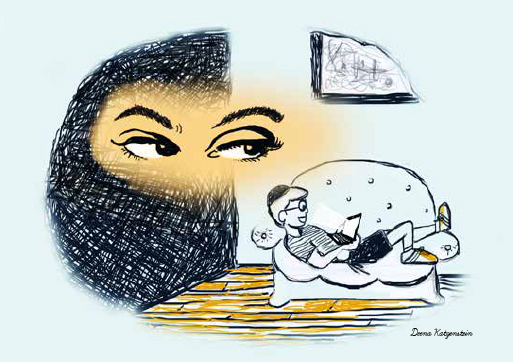Yes, social media friendships are real

When my husband and I moved our family from the Upper West Side to Park Slope two years ago, I felt a strange sort of loneliness.
The move had brought me geographically closer to my family and, as we had both grown up in the boroughs, we weren’t lacking for friends. Our weekends were packed with dinners and parties, brunches and drinks. We had old friends and newer friends with whom to spend our time.
But still, something was lacking.
What I was missing, more than anything, was acquaintances. I knew few people in our new hood and didn’t have many opportunities to meet anyone. I work from home and, since we moved mid-year, our children weren’t going to school in the neighborhood yet.
I didn’t recognize faces on the street like I had on the UWS; I didn’t have other moms to chit-chat with as our kids played on the swings. People are strange when you’re a stranger.
The lack of acquaintances translated into lacking a sense of being part of a community, which made me feel isolated.
Sure, I could call my best friend and talk for an hour about things that really matter, but what I needed during the other waking hours of the day was someone with whom to discuss where to get the best hole-in-the-wall Chinese food or to chat about the weather while ordering my coffee.
About two decades ago, British anthropologist Robin Dunbar proposed a now-famous theory that a person could only really maintain about 150 friendships.
But at the time, only personal relationships were relevant — this was the era before social media.
So Dunbar recently set out to test a version of his thesis: If we apply Dunbar’s number to, say, Facebook friends, what would that mean? How would that translate into actual friendships?
Dunbar’s conclusion was that Facebook friends are no substitute for the real thing, suggesting that casual friends or acquaintances are overvalued.
Dunbar said that if you have 150 Facebook friends, you can likely only count on about four of them in a time of crisis. This was shared across the mediasphere as damning evidence that our Facebook friendships are shallow.
But that reaction, while rational, is wrong. It misunderstands the nature of a social circle and misses the importance of acquaintances.
Four friends who will be there for you if you need them at 3 a.m. is a solid number, and there’s nothing wrong with the other 146 friends playing a different role for you. The truth is the 3 a.m. crises are, hopefully, few and far between, and if you have four people you can turn to during those times, you’re already in a great place friend-wise.
But for the rest of your life, it’s fine to have friends and acquaintances who tell you how cute you look in your profile pictures, play Words with Friends or leave comments when you crowdsource restaurants in a new city.
Offline this can translate to your neighbor taking in your packages while you’re away, a mom-friend keeping an eye on one of your children while you chase around the other or a variety of other casual interactions that make up our everyday lives.
It’s not just for convenience, either. A study out of Rutgers in 2014 found regular social interaction improves psychological well-being. The study found that “having continuously low levels of contact with neighbors, or losing contact with neighbors over the 10-year study period, was associated with declining levels of eudaimonic well-being.”
Facebook or Twitter certainly help with the feeling of community but, as this study shows, they’re not a substitute for real-life acquaintances.
It’s worthwhile, of course, to cultivate deep, lasting friendships. But it’s also important to appreciate the more casual friendships that are part of our daily routines. And of course, those deep friendships of ours began somewhere — the person who currently only garners a head nod as you pass in the street may someday be the one you call at 3 a.m.
Or perhaps just the one you text a few times a week to chat. There’s nothing wrong with that either.http://nypost.com/2016/02/07/yes-social-media-friendships-are-


